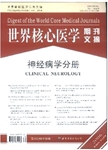高同型半胱氨酸血症与小血管病患者白质体积改变相关
Hyperhomocysteinemia is associated withvolumetric white matter change in patients with small vessel disease出 版 物:《世界核心医学期刊文摘(神经病学分册)》 (Digest of the World Core Medical Journals.Clinical Neurology)
年 卷 期:2006年第10期
页 面:23-24页
学科分类:1002[医学-临床医学] 100204[医学-神经病学] 10[医学]
摘 要:Background: Hyperhomocysteinemia is associated with cerebral small vessel disease (SVD). We examined the relationship between homocysteine and 1) volumetric measure of white matter change (WMC), 2) silent brain infarcts, 3) cerebral atrophy on MRI and 4) cognition on a consecutive cohort of patients with stroke associated with SVD. Subjects and methods: Fifty- seven patients consecutively admitted to the Acute Stroke Unit in a university hospital due to stroke associated with SVD were recruited and assessed three months after the stroke. Nonfasting homocysteine was obtained. Using MRI, the number of infarcts, volume of WMC and cerebral atrophy were measured. General cognitive functions were assessed using the Mini Mental State Examination and Alzheimer’ s disease Assessment Scale. Mattis Dementia Rating Scale - Initiation/ Perseveration subset was used to assess executive cognitive functions. Results: Hyperhomocysteinemia (≥ 14.88 μ mol/L)- significantly accounted for the volume of WMC on MRI in a multivariate stepwise regression model (adjusted R2=0.058, p 0.05) after adjustment for age and folate level. Patients in the highest quartile of WMC volume had significantly higher levels of homocysteine than those in lowest quartile (p 0.001). No significant relationship was found between homocysteine and silent brain infarcts, cerebral atrophy and performance on psychometric tests. Conclusion: Hyperhomocysteinemia is associated with volumetric measure of WMC among patients with SVD. The role of homocysteine in the development of silent brain infarcts and cerebral atrophy as previously reported cannot be ascertained in this study. No direct relationship was found between homocysteine and cognitive functions.



